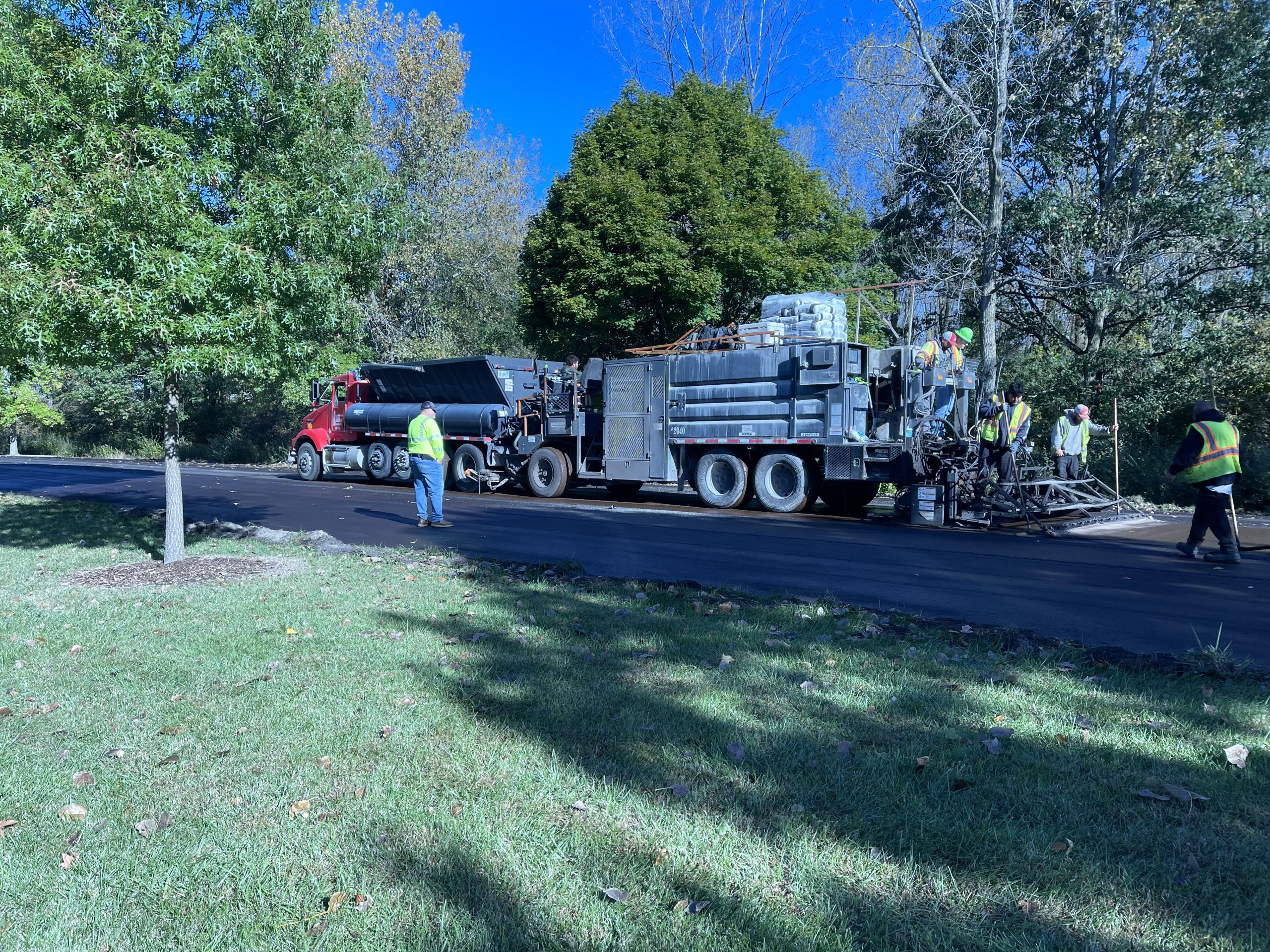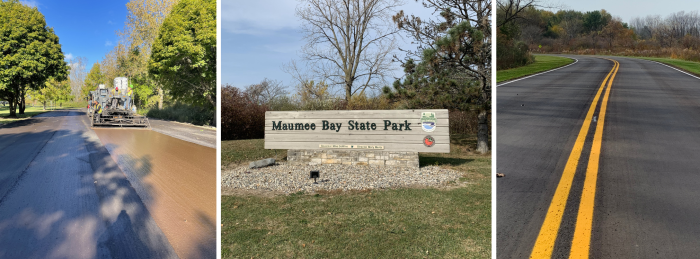14
Jan 14th, 2025

Before pavement preservation gained widespread recognition, micro surfacing was already proving its value as a preventative maintenance tool. Introduced to the U.S. paving industry in the early 1980s, this innovative treatment has been a cornerstone of Evergreen Roadworks’ Pavement Maintenance Systems (PMS) division since 1988. With decades of hands-on experience, the PMS team has honed their micro surfacing craft and consistently witnessed its transformative impact on asphalt preservation.
Micro surfacing is a surface treatment applied across the full width of a roadway, designed to extend the service life of asphalt pavements. It falls under the same category as seal coats and thin hot mix asphalt (HMA) overlays. As an emulsified asphalt seal, it is made of crushed aggregates, cationic polymer-modified asphalt emulsion, mineral fillers, water and additives used to accelerate curing time.
This treatment is ideal for roads in good condition showing early signs of wear such as friction loss, oxidation, raveling or minor rutting. It is not suited for roads with significant structural distress but excels as a preventative measure to prolong the life of otherwise healthy asphalt structures.
When applied properly, micro surfacing offers a range of benefits:
Research consistently shows that micro surfacing extends the life of asphalt pavement by at least 7-9 years. A Transportation Research Board study noted that, “Micro surfacing to date, when applied by highly trained professionals, can extend pavement life by more than ten years, but often performs poorly when applied using subpar workmanship and practices (source).” For this reason, it is essential to be aware of an applicator’s experience.
Although often used interchangeably, slurry seal and micro surfacing have distinct differences:
Micro surfacing complements HMA by improving and protecting its lifespan. Together, the two can create more enduring roadways. When compared to the equivalent thin HMA overlay treatment, micro surfacing is:
In fall 2024, Pavement Maintenance Systems (PMS), a sector of Evergreen Roadworks, completed a micro surfacing project at Maumee Bay State Park in Ohio, covering nearly 40,0000 square yards of roadways and parking lots. Despite being 15 years old, the park’s asphalt was in good condition, and a great candidate for pavement preservation, given its proximity to Lake Erie and exposure to freeze-thaw cycles.

PMS team performs micro surfacing treatment at Maumee Bay State Park, resulting in a restored black surface.
Before application, cracks larger than ¼” were sealed and tack coat was applied to ensure adhesion. The micro surfacing mixture – prepared in a pugmill mixing chamber – was evenly applied over the roadways using a spreader box for efficient, uniform coverage.
Even with temperatures around 50°F, the emulsion set effectively, enabling PMS to complete the project quickly, minimizing traffic disruption. Initially grey-brown in color, the surface darkened as it cured, leaving a durable, smooth black finish.
The PMS teams’ expertise set this project apart. The crew included foreman Chase Cornell and operator Jason Cline with 20 and 25 years of micro surfacing experience, respectively. Steve Willett, project manager, was also present to supervise the entire operation. Their focus on safety, traffic control, and excellent communication ensured efficiency and quality.
Micro surfacing empowers roadway managers to maximize taxpayer dollars by maintaining roads safely, sustainably and cost-effectively. When combined with other innovative methods, this treatment enables infrastructure budgets to stretch further, creating safer and longer-lasting roadways.
This project has been featured in AsphaltPro Magazine! Check out their story here for a deeper dive into the distinct micro surfacing technologies used on Maumee Bay State Park roads.